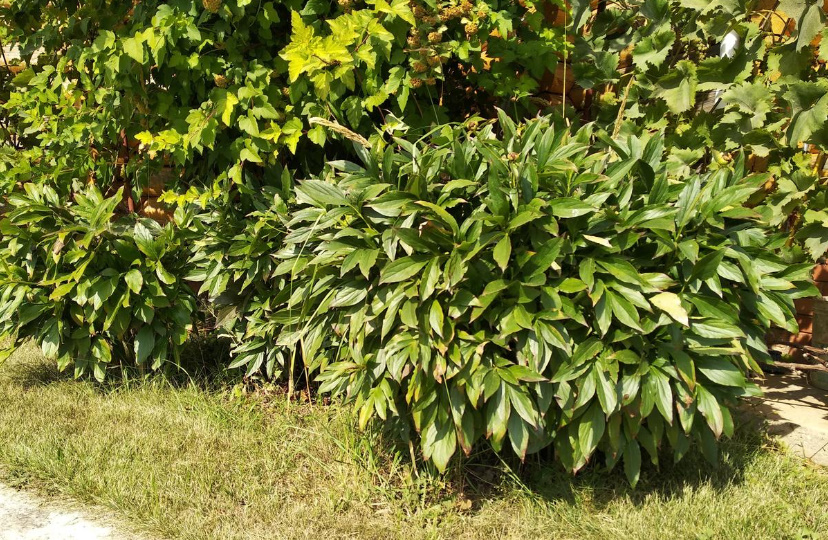With the approach of autumn, experienced gardeners begin to prepare their ornamental plants for wintering. Peonies are no exception, they also require certain activities that will help them successfully survive the cold season, and most importantly, bloom luxuriantly next season. But don’t be alarmed: the good news is that these wonderful perennials are content with little, unlike, for example, roses or Hydrangea macrophylla.
Feeding peonies in autumn
In spring and summer, our peonies spent a lot of effort on building up the green mass, forming buds and blooming. Competent fertilizing throughout the season made it possible to enjoy all this splendor, but practically no nutrition was spent on the development of the root system. But in the fall it’s time to take care of the base part of the bush — underground.
It should be borne in mind that if a peony is sick, then it should be treated first, and then fed.
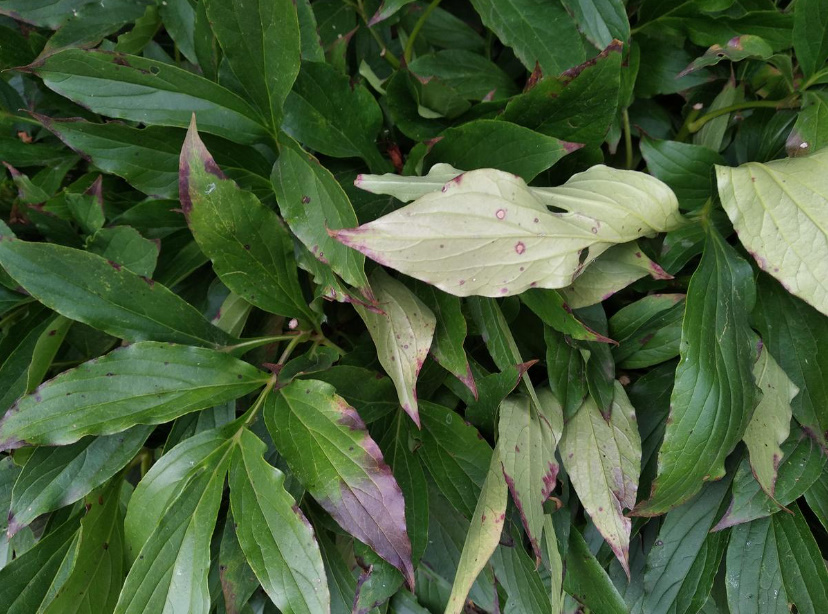
How to feed
During this period, we will not need any fertilizers containing a large amount of nitrogen. Top dressing with rotted manure, green fertilizer from grass, carbamide, saltpeter, etc. will be postponed until spring. Now we need an enhancement with an emphasis on phosphorus and potassium. In addition, for high—quality flowering, peony needs two more important elements – sulfur and magnesium.
There is one important feature of feeding in the autumn. As a rule, rains are not uncommon during this period, and the soil is kept quite moist. Therefore, there is no need to make solutions of dry fertilizers and spill bushes with them. If in summer, when rains are rare, this technique is justified, then now it is better to allow the granules to dissolve gradually with the help of natural precipitation. In some regions, autumn can be dry — in such a situation, of course, it is better to apply fertilizers in liquid form.
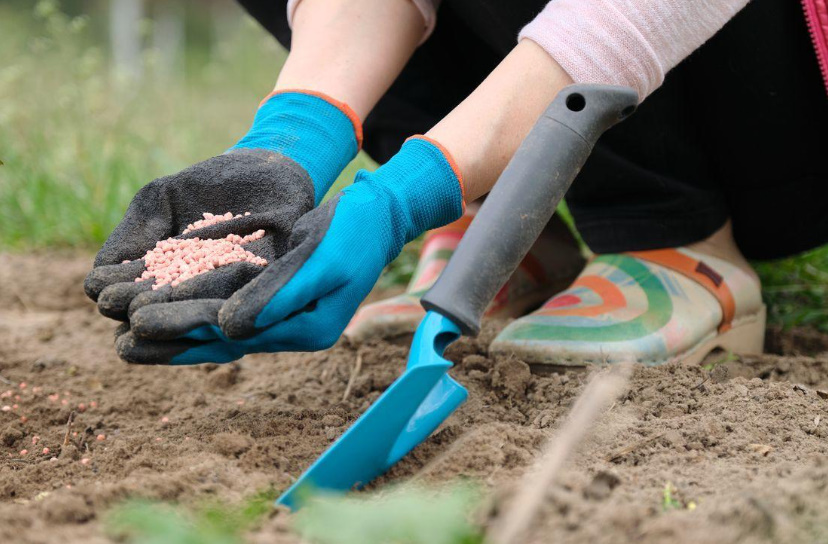
The bulk of the peony roots are located along the perimeter of the crown, and therefore it makes no sense to pour fertilizers directly into the center of the plant. It is necessary to loosen the soil around the bush with hand rakes under its foliage (usually retreating 15-20 cm from the stems), sprinkle the top dressing and bury.
Autumn food recipes for peonies
As mentioned above, the main elements should be phosphorus and potassium. The basic top dressing for peony includes 60 g of superphosphate and 40 g of potassium sulfate (potassium sulfate) per 1 m². If you consider it right to make liquid top dressing, then you need to dilute these fertilizers in 10 liters of water and shed the plants.
Many gardeners complain that superphosphate is difficult to dilute in water. The solution is to make an infusion. To do this, take 200 g of superphosphate, grind a little and pour 2 liters of boiling water. Insist for a day. Then pour 150 ml of the resulting infusion into a bucket, top up with water to 10 liters, add potassium sulfate, which dissolves well, stir and spill peonies.
To supplement the top dressing with magnesium and sulfur, you can use “Kalimag” (other names are “Kalimagnesia”, “Potassium magnesia”). Such complexes contain from 20 to 32% potassium and 10-12% magnesium. Sulfur is also present as an additional element (about 20%). If you use this fertilizer, then add 25-40 g/m² to the base dressing instead of potassium sulfate.
If you have basic fertilizers, you can additionally apply a complex of trace elements and process peonies on the leaves, diluting according to the instructions. However, this should be done in late August — early September, while the foliage is still fresh, not starting to turn yellow. Another option to add magnesium is to use special top dressing, etc. All of them, as a rule, have sulfur in their composition, so this element will also get to your peonies.
There are situations when it is not possible to purchase fertilizers or only bone meal was at hand. Mix 100 g of powder with 1 cup of ash, spread it around the plant and bury it — this will be a big plus. Is there nothing but ashes? Use only it: put a couple of glasses of this natural fertilizer under your peonies, and they will thank you.
Transplanting, dividing and planting peonies
Peony is the plant that is best manipulated in the autumn. It is at the end of August and September that he has a period of relative rest: flower buds have already been formed, and thin suction roots have not yet begun to grow. Therefore, all activities related to the violation of the root system will be most painless at this time.
If you have planned the planting of a new peony, it is very important to choose the right place right away, since it is not worth disturbing the plant with relocation. A bush of this culture can grow in one place for a very long time (20 years or more), so you need to assess what will be nearby: whether a powerful bush or tree will grow in the neighborhood that will shade the peony and take away moisture, whether it is planned to erect a fence, pergola or some kind of structure nearby. Yes, peony needs a lot of sun, otherwise nothing good will come out.
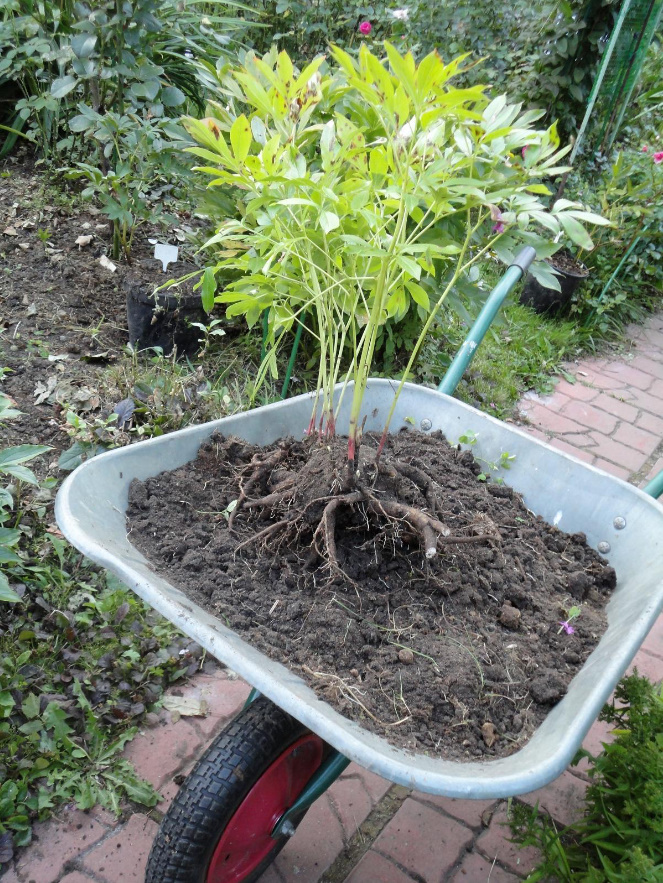
You can divide peonies no earlier than at the age of five. Theoretically, it is permissible to do this at a younger age, but you will not get many shares, and they are unlikely to be of high quality.
If you purchased a peony with a closed root system in a nursery, then it will be easier to plant it. It is important to choose a high-quality healthy plant with 2-3 buds. And how to prepare a landing pit for him and land him, see the video.
Preparing for winter
As a rule, herbaceous peonies winter well without shelter. An exception should be made only for those that were planted in the current season. They are not well rooted yet and may suffer. But even in this case, it is important not to overdo it — cover with cardboard or covering material on top of mulch from compost, throw branches of coniferous trees. The main thing is not to make a greenhouse: the peony may not survive the evaporation.
Oddly enough, there are often discussions about whether it is necessary to prune the aboveground part of the peony in the fall. The right question is: when is it required to do this? It is necessary to remove foliage and stems even from a healthy plant — and even more so from one that has been affected by diseases or pests. However, there is no need to hurry: the whole green mass takes an active part in the autumn processes taking place at the peony. By cutting it too early, we can do harm.
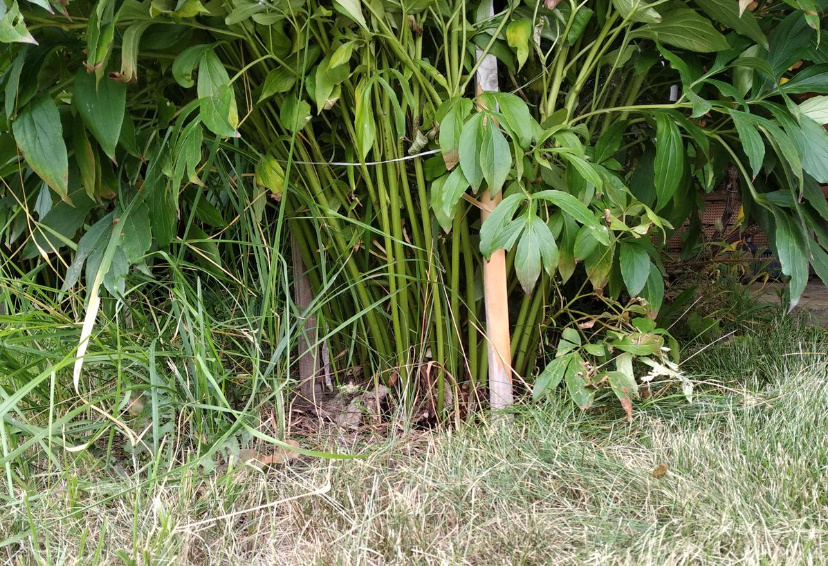
When preparing a bush for wintering, you should focus not on the calendar, but on the weather forecast. After the first frosts hit, the foliage of the peony becomes unviable and no longer brings any benefit to the plant. At this point, it’s time to delete it. It is necessary to cut flush with the ground, without leaving stumps: during thaws they can begin to rot. We remove all the foliage, it’s not worth sending it to the compost — it’s best to burn it right away. In the same way, we remove and burn mulch, if it was of plant origin, since it may contain pathogens and pests that have settled for the winter.
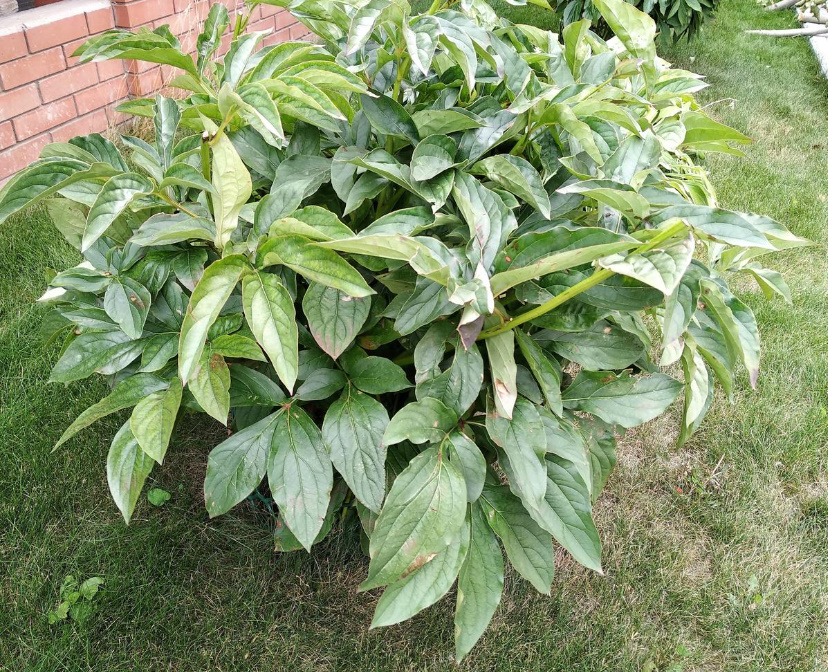
Then sprinkle the barrel circle with compost, peat or sawdust. The main thing is not to forget to clean it all up in time in the spring.
If you have consistently healthy peonies in full bloom, and you are not going to plant new ones or replant old ones, then all autumn work is reduced to timely fertilizing and pruning of foliage. This is not difficult to do at all. If you are planning to reconstruct a flower garden or build a new one, then September is the most fertile time for this business, do not miss it. And how do you prepare your peonies for winter? Maybe you know special secrets that make it easier for gardeners to work or make it more efficient? Share it with us in the comments.
